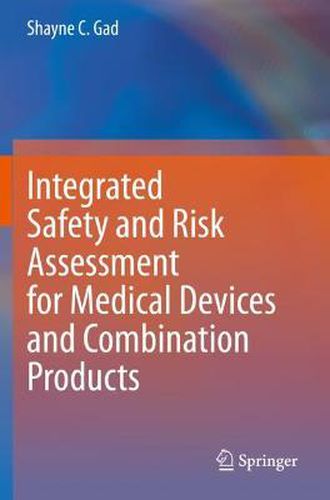Readings Newsletter
Become a Readings Member to make your shopping experience even easier.
Sign in or sign up for free!
You’re not far away from qualifying for FREE standard shipping within Australia
You’ve qualified for FREE standard shipping within Australia
The cart is loading…






This title is printed to order. This book may have been self-published. If so, we cannot guarantee the quality of the content. In the main most books will have gone through the editing process however some may not. We therefore suggest that you be aware of this before ordering this book. If in doubt check either the author or publisher’s details as we are unable to accept any returns unless they are faulty. Please contact us if you have any questions.
While the safety assessment ( biocompatibility ) of medical devices has been focused on issues of local tissue tolerance (irritation, sensitization, cytotoxicity) and selected quantal effects (genotoxicity and acute lethality) since first being regulated in the late 1950s, this has changed as devices assumed a much more important role in healthcare and became more complex in both composition and in their design and operation.
Add to this that devices now frequently serve as delivery systems for drugs, and that drugs may be combined with devices to improve device performance, and the problems of ensuring patient safety with devices has become significantly more complex.
A part of this, requirements for ensuring safety (once based on use of previously acceptable materials - largely polymers and metals) have come to requiring determining which chemical entities are potentially released from a device into patients (and how much is released). Then an appropriate and relevant (yet also conservative) risk assessment must be performed for each identified chemical structure. The challenges inherent in meeting the current requirements are multifold, and this text seeks to identify, understand, and solve all of them.
*
Identify and verify the most appropriate available data.
*
As in most cases such data is for a different route of exposure, transform it for use in assessing exposure by the route of interest.
*
As the duration (and rate) of exposure to moieties released from a device are most frequently different (longer) than what available data speaks to, transformation across tissue is required.
*
As innate and adaptive immune responses are a central part of device/patient interaction, assessing potential risks on this basis are required.
*
Incorporating assessments for special populations such as neonates.
*
Use of (Q)SAR (Quantitative Structure Activity Relationships) modeling in assessments.
*
Performance and presentation of integrative assessments covering all potential biologic risks.
Appendices will contain summarized available biocompatibility data for commonly used device materials (polymers and metals) and safety assessments on the frequently seen moieties in extractions from devices.
$9.00 standard shipping within Australia
FREE standard shipping within Australia for orders over $100.00
Express & International shipping calculated at checkout
This title is printed to order. This book may have been self-published. If so, we cannot guarantee the quality of the content. In the main most books will have gone through the editing process however some may not. We therefore suggest that you be aware of this before ordering this book. If in doubt check either the author or publisher’s details as we are unable to accept any returns unless they are faulty. Please contact us if you have any questions.
While the safety assessment ( biocompatibility ) of medical devices has been focused on issues of local tissue tolerance (irritation, sensitization, cytotoxicity) and selected quantal effects (genotoxicity and acute lethality) since first being regulated in the late 1950s, this has changed as devices assumed a much more important role in healthcare and became more complex in both composition and in their design and operation.
Add to this that devices now frequently serve as delivery systems for drugs, and that drugs may be combined with devices to improve device performance, and the problems of ensuring patient safety with devices has become significantly more complex.
A part of this, requirements for ensuring safety (once based on use of previously acceptable materials - largely polymers and metals) have come to requiring determining which chemical entities are potentially released from a device into patients (and how much is released). Then an appropriate and relevant (yet also conservative) risk assessment must be performed for each identified chemical structure. The challenges inherent in meeting the current requirements are multifold, and this text seeks to identify, understand, and solve all of them.
*
Identify and verify the most appropriate available data.
*
As in most cases such data is for a different route of exposure, transform it for use in assessing exposure by the route of interest.
*
As the duration (and rate) of exposure to moieties released from a device are most frequently different (longer) than what available data speaks to, transformation across tissue is required.
*
As innate and adaptive immune responses are a central part of device/patient interaction, assessing potential risks on this basis are required.
*
Incorporating assessments for special populations such as neonates.
*
Use of (Q)SAR (Quantitative Structure Activity Relationships) modeling in assessments.
*
Performance and presentation of integrative assessments covering all potential biologic risks.
Appendices will contain summarized available biocompatibility data for commonly used device materials (polymers and metals) and safety assessments on the frequently seen moieties in extractions from devices.